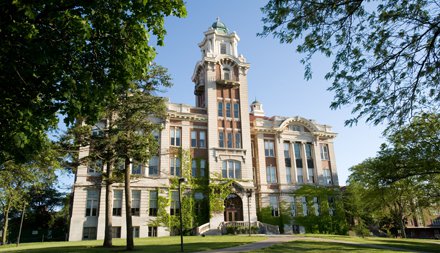Lyman Hall Special Collections Research Center
Page featured image content

Lyman Hall, SU Photo & Imaging RS 8492
Page main body content
Buildings Plans Announced: January 18, 1905
Construction Began: Summer 1905
Occupied: 1907
Cost: $250,000
Funding: $200,000 bequest from John Lyman in memory of his daughters
Named for: Mary and Jessie Lyman, deceased daughters of John Lyman, Board of Trustees from 1893 to January 1904
Materials: Marble base; brick and Indiana limestone
Architects: Professors Frederick W. Revels and Earl Hallenbeck
Style: Renaissance
Partial Renovation: 1963 - 8 graduate labs, offices and a seminar room
Cost: $90,482
Funding: $46,825 National Science Foundation grant
Partial Renovation: 2009 - first and second floors remodeled to create Technology Center
Cost: $1.4 million
Funding: JP Morgan Chase
Notes: Originally named John Lyman Hall of Natural History, the building was occupied by the Departments of Biology, Botany, Geology, Zoology, Psychology and Geography. In 1930, the fourth floor was remodeled and made into the Natural History Museum bringing together the various museum collections previously distributed throughout the building. On January 11, 1937 a loud explosion was heard from the lab of Dr. Ernest Reed and shortly thereafter a fire was reported on the fourth floor of the building. The fire destroyed the top floor and the roof of the building as well as many of the valuable museum collections and research materials of a number of professors and graduate students. Possibly caused by an unattended gas burner igniting lab equipment, the resulting fire reached stored photographic film and gun powder. Fire damage was estimated at $79,000. By the start of February, the building was once again open for classes; it was completely restored by September of 1937.
In 2009, two floors were remodeled to house the JP Morgan Chase Technology Center, an on-campus facility where students and faculty partner with bank employees to conduct research and run global technology operations.
In 2017, Syracuse University Ambulance was moved from 804 University Avenue to the lower level of Lyman Hall.
